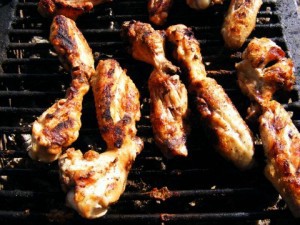Why We Eat Chicken

Although inconclusive, evidence suggests that ground zero for the bird’s westward spread may have been the Indus Valley, where the city-states of the Harappan civilization carried on a lively trade with the Middle East more than 4,000 years ago. Archaeologists have recovered chicken bones from Lothal, once a great port on the west coast of India, raising the possibility that the birds could have been carried across to the Arabian Peninsula as cargo or provisions. By 2000 B.C., cuneiform tablets from Mesopotamia refer to “the bird of Meluhha,” the likely place name for the Indus Valley. That may or may not have been a chicken; Professor Piotr Steinkeller, a specialist in ancient Near Eastern texts at Harvard, says that it was certainly “some exotic bird that was unknown to Mesopotamia.” He believes that references to the “royal bird of Meluhha” — a phrase that shows up in texts three centuries later — most likely refer to the chicken.
How did an animal related to the dinosaurs become a food item commonly picked up at grocery stores and found on dinner tables around the world (KFC rules the fast food market in China)? Apparently, chickens were first domesticated by humans for cockfighting, and then we decided to eat them. We’re a fascinating species, aren’t we? [via]
Photo: Flickr/Public Domain Photos
Support The Billfold
The Billfold continues to exist thanks to support from our readers. Help us continue to do our work by making a monthly pledge on Patreon or a one-time-only contribution through PayPal.
Comments